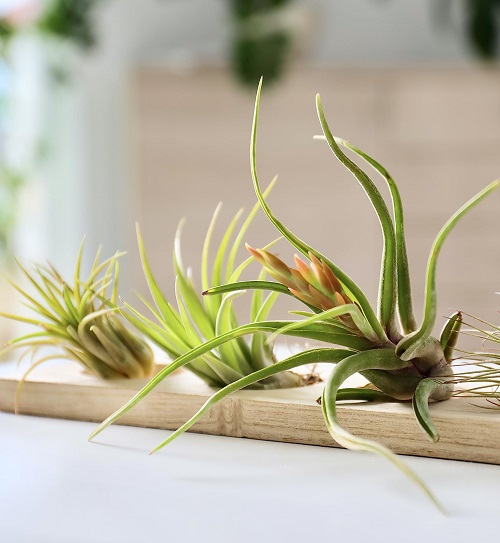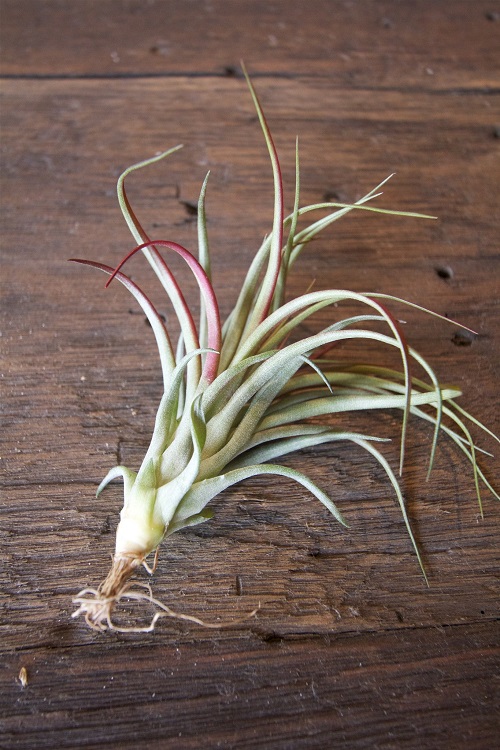Learn Everything About Air Plant Diseases and how to prevent them in this comprehensive guide that will help you safeguard Tillandsia.
Air plants are a unique and captivating group that thrive without soil and derive most of their nutrients and water from the air. While they are relatively low-maintenance, air plants are not immune to diseases affecting their health and vitality. Understanding Everything About Air Plant Diseases is essential for tillandsia lovers to ensure their plants remain vibrant and resilient.
15 Air Plant Diseases
1. Gray Mold
This is a fungal disease that appears as a fuzzy, grayish growth on the leaves of air plants. It’s often caused by excess humidity or poor air circulation. Infected areas become soft and decayed.
2. Root Rot

Root rot occurs when the roots of air plants are consistently exposed to excess moisture. It can be caused by overwatering or inadequate drainage. Infected plants will have mushy and discolored roots.
3. Leaf Spot
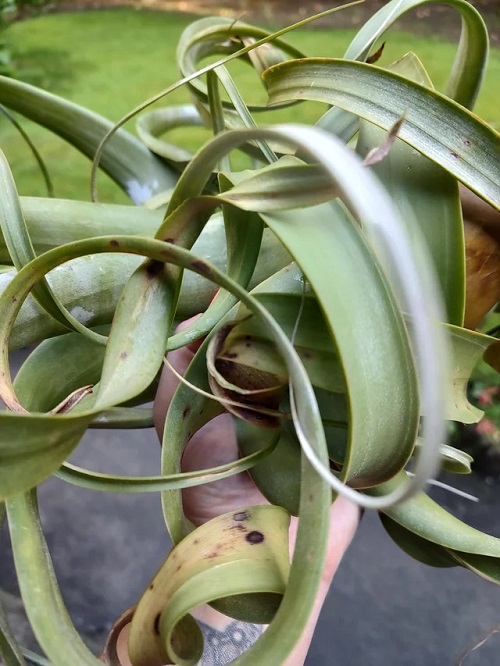
This presents as brown or black spots on the leaves of air plants. Various fungi cause it and can spread quickly in humid conditions. Infected leaves may become discolored and drop prematurely.
4. Powdery Mildew
Powdery mildew is a white, powdery fungus that can grow on air plants. It harms the plants by blocking sunlight and stealing nutrients. To prevent it, keep the plants dry, provide good air circulation, and avoid crowding. If found, remove the infected areas and apply a fungicide if needed.
5. Bacterial Soft Rot
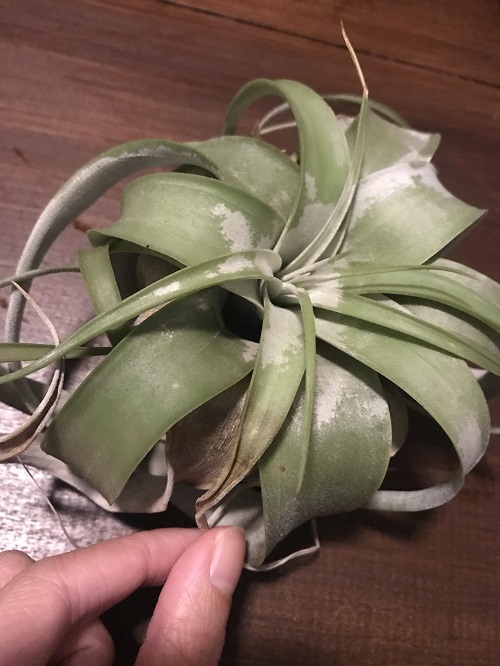
Bacterial soft rot is a disease in air plants caused by harmful bacteria. It makes the plants soft and mushy, often with a bad smell. It spreads quickly, especially in wet and warm conditions. To stop it, remove infected parts, avoid overwatering, and ensure proper ventilation.
6. Anthracnose
Anthracnose is a disease in air plants caused by a fungus. It creates dark spots on leaves, affecting plant health. Warm and wet environments encourage its growth. Prevent it by keeping leaves dry, providing good air circulation, and avoiding overcrowding. Remove and destroy infected parts to stop their spread.
7. Virus Infections

Virus infections in air plants are caused by tiny germs that can harm the plants. They can make the leaves look unusual, change colors, or show patterns. There’s no cure for viruses, so prevent them by keeping plants clean, avoiding infected tools, and removing and destroying infected plants to protect others.
8. Phytophthora Root Rot
This disease affects the roots and base of air plants, causing wilting, yellowing, and eventual plant death. It’s caused by a waterborne pathogen that thrives in excessively wet conditions.
9. Rust
Rust presents as reddish-brown pustules on the leaves of air plants. Fungal spores cause it and can weaken the plant by interrupting photosynthesis.
10. Southern Blight
This causes wilting and decay at the base of air plants. It’s a fungal disease that thrives in warm, humid conditions and can lead to plant collapse.
11. Edema
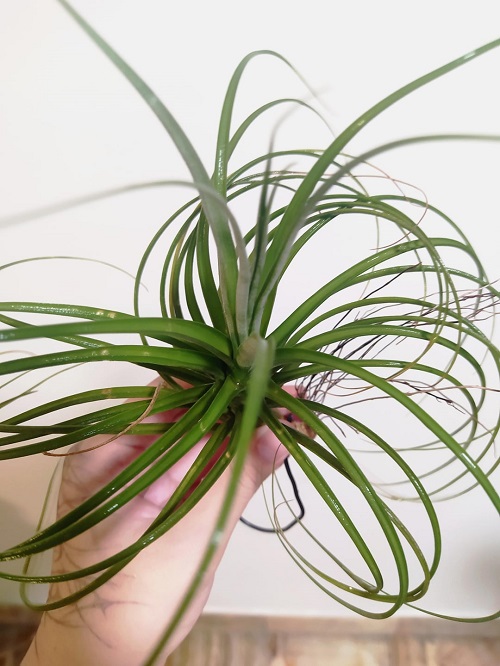
This results from water accumulation within plant cells due to inconsistent watering. It appears as blister-like swellings on the undersides of leaves and can lead to tissue damage.
12. Corky Scab
This causes raised, corky lesions on air plant leaves. It’s a fungal disease that may also have dark spots in the center of the lesions. To prevent it, ensure good air circulation, avoid overwatering, and remove affected parts. Disinfect tools to prevent spread.
13. Black Rot
Black rot in air plants is caused by bacteria and leads to dark, slimy spots on leaves. It can spread quickly in damp conditions. Prevent it by keeping plants dry, avoiding overcrowding, and removing affected leaves promptly. Clean tools to prevent further infections and promote plant health.
14. Bacterial Leaf Spot
Bacterial leaf spot in air plants is caused by harmful bacteria, resulting in small, water-soaked spots on leaves. These spots can enlarge and turn brown. Prevent it by not splashing water on leaves, providing good air circulation, and removing affected parts. Keep plants dry to stop their spread.
15. Fungal Blights
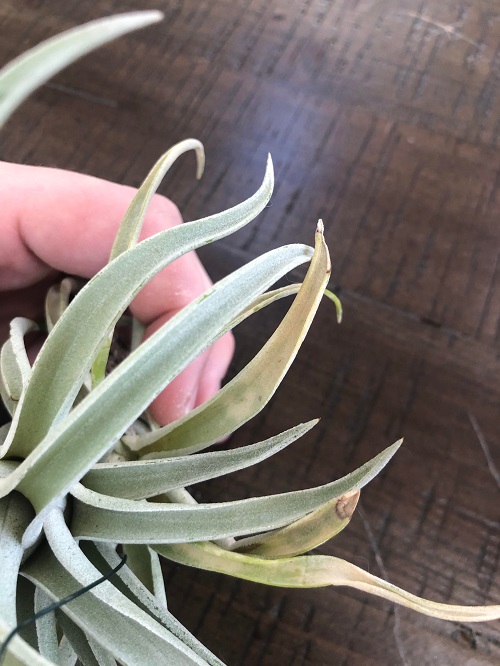
This disease is caused by fungi, creating dark, discolored areas on leaves. They spread in humid conditions. Prevent them by avoiding excess moisture, promoting ventilation, and removing infected leaves. Using fungicides can help control their growth and protect plant health.
16. Mealybugs
Mealybugs are tiny insects that can infest air plants. They look like white, cottony clusters on leaves, sucking out plant juices and causing damage. To get rid of them, isolate infected plants, remove bugs manually, use soapy water, or rubbing alcohol, and maintain plant hygiene.
Prevention for Air Plant Diseases
- Water air plants by misting or soaking. But ensure they have proper drainage afterward. Avoid overwatering, as it can lead to root rot.
- Provide adequate air circulation to prevent the buildup of excess humidity, which can lead to fungal infections.
- Regularly clean your air plants by gently rinsing them to remove dust and debris. This can create a breeding ground for pests and diseases.
- Ensure your air plants receive the appropriate amount of light – too much or too little light can weaken the plants and make them more susceptible to diseases.
- Keep your plants in well-ventilated areas. This will prevent stagnant air, which can encourage the growth of fungal pathogens.
- Give your air plants enough space to prevent leaves from touching. It can reduce the risk of disease spread.
- You can quarantine the affected plant to prevent it from spreading while you address the issue.

